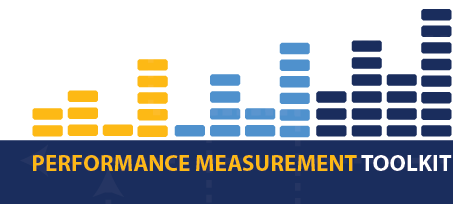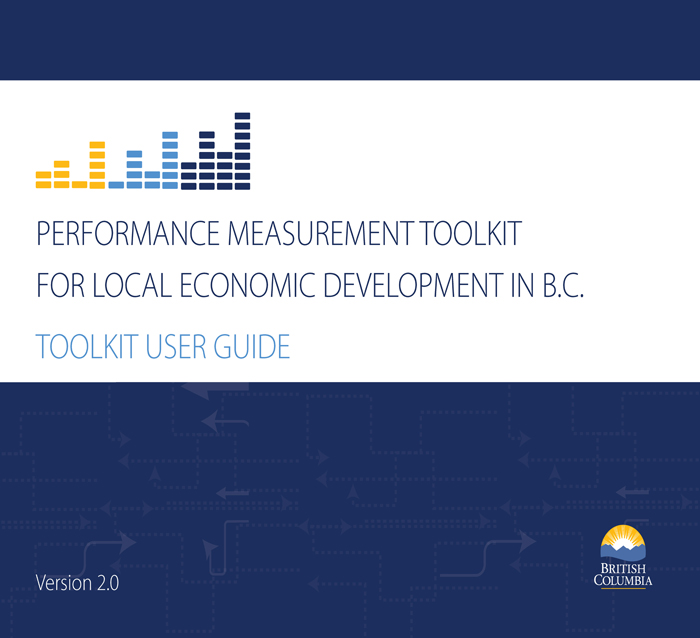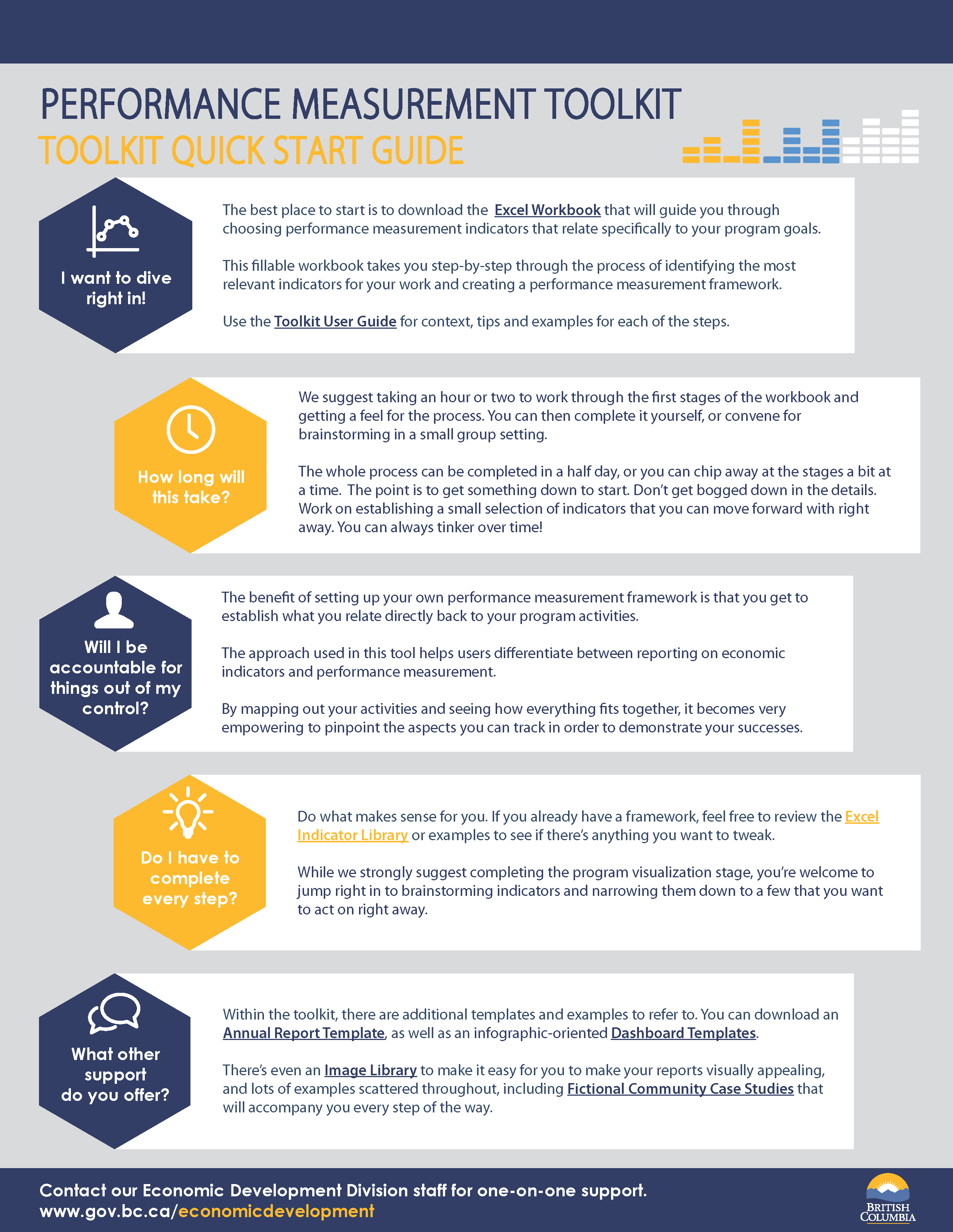Performance Measurement Toolkit for Local Economic Development
As economic development practitioners, you are increasingly asked to track and report on metrics related to your economic development work. This can be challenging when your resources or capacity are limited, or if there is a lack of clarity around how or what you should be tracking.
A performance measurement plan allows you to:
- Track your successes
- Demonstrate the value of your activities
- Ensure that your efforts remain focused
The Performance Measurement Toolkit is a step-by-step guide to help you:
- Choose relevant indicators
- Develop a customized implementation plan
- Communicate the impact of your work
How the Performance Measurement Toolkit Works
The toolkit consists of five essential steps to planning performance measurement. You can go through the steps sequentially or access only those that make sense for your needs. Find more details on performance measurement and how to use this toolkit in Getting Started. You can also download all steps in the Toolkit User Guide.
Click below to access each step. Begin at the “About You - Inventory” step.
1. About You - Inventory
The first step in performance measurement is to determine what economic development work is currently planned and underway, as well as what direction you are headed. A clear understanding of your current state will better position you to use performance measurement in an effective way.
2. Visualizing Your Path
The second step is to visualize the entirety of your program or project from where you are now to where you want to go. A common way to do this is to represent your program or project as a logic model. Logic models are easy to use and provide a clear roadmap for success.
3. Choosing Indicators
The third step guides you through choosing your performance indicators for tracking the progress of your program or project.
4. Implementation Plan
The fourth step moves you from visualization into action by outlining how you will manage your performance measurement efforts. An implementation plan describes the who, the why, the when and the where - essential details to help you keep your stakeholders informed.
5. Communicating Results
The final step outlines how to communicate the progress and success of your program or project. Regular communication maintains support and buy-in from your stakeholders. A recommended approach is to use an indicator dashboard as it provides a clear and easy-to-understand snapshot of your current state.


Regional Economic Operations (REO) staff are located in every region of the province. They assist communities in planning and implementing economic development priorities.
Check out this useful Quick Start Guide to help you get up and running successfully.

Download all components of the toolkit here:
- Toolkit User Guide (PDF, 0.9 MB)
- Excel Workbook (XLS, 0.1 MB)
- Dashboard Templates (DOC, 0.8 MB)
- Annual Report Template (DOC, 0.3 MB)
- Image Library
- Fictional Community Case Studies (PDF, 0.3 MB)
B.C. Assembly of First Nations (BCAFN) works with First Nations to provide them with the tools and information they need to build successful, sustainable plans for economic development.


